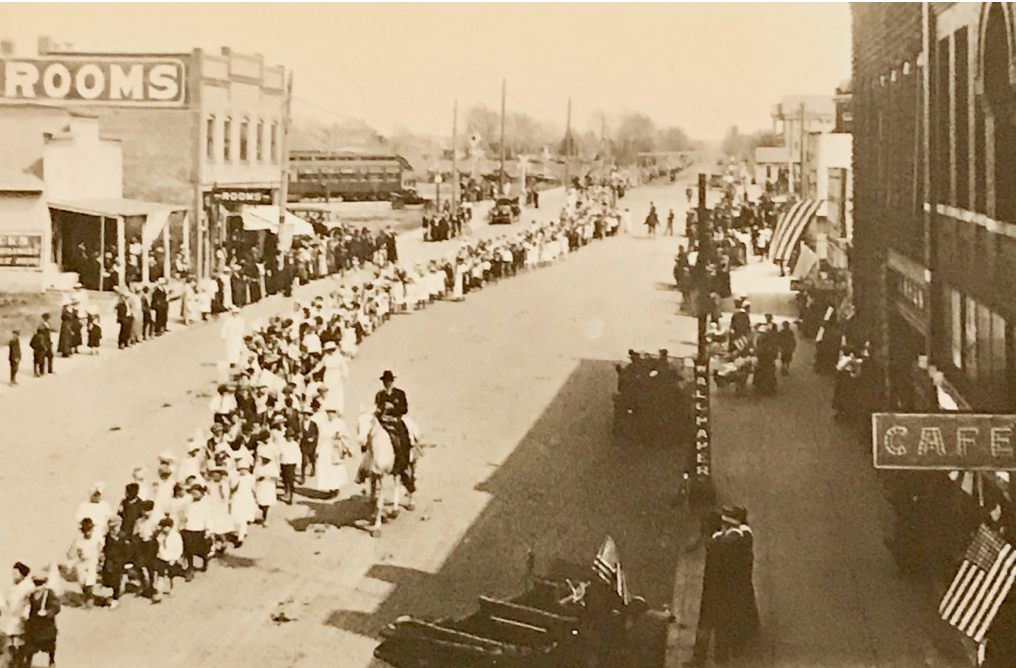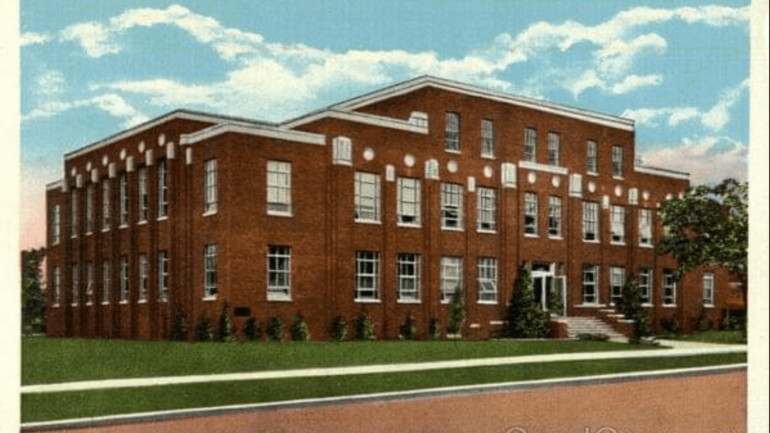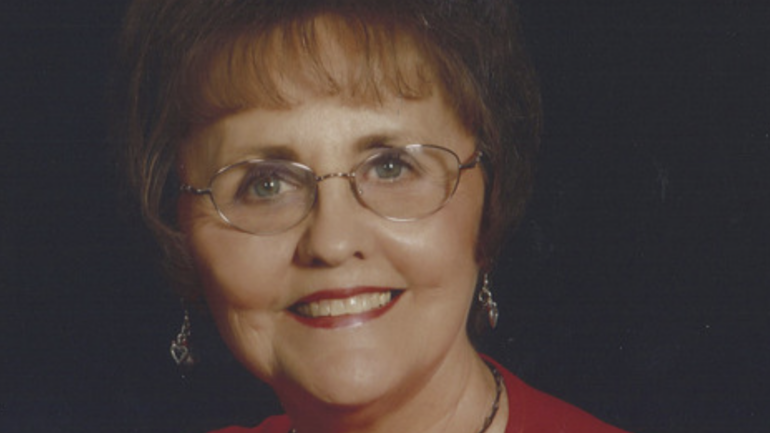Telling the history of Claremore…one story at a time
This article was written by Ken Willhoite and published in the Centennial Edition of the Claremore Progress, June 27, 1993.
If you ask an old-timer how to get somewhere in Rogers County, don’t expect to hear the names of streets. Probably what you’ll hear will be related in terms of “corners.” A mile west of Wolf corner, half a quarter from Crosby-Jones corner, two east and mile north of Wycoff corner. The corner is the North Star, a constant point of navigation from which anything, in any direction, can be reached. But those corners are much more. They are permanent reminders of some of Rogers’s counties oldest families.
Wyckoff corner, east of Claremore, has always been home to Rue Kelsey, whose mother and father first called the land their own. She grew up on and around that land. She and her late husband, Glenn, raised their family there.
The tale of their ancestors is diverse as the story of America itself. Rue’s father, Harry Wycoff, was the descendant of a family that first came to America in 1659 as indentured servants, working the land to pay for their voyage across the vast Atlantic Ocean from Holland. They settled in the area that is now New York City. Their home, dwarfed by towering skyscrapers, still stands as the oldest wooden structure in the United States.
In the year 1659, the Kelsey family also settled in the northeast. Whalers by trade, they were among the 10 original families (including such famous names as Folgers and Macys) to buy Nantucket Island from the Indians. They lived on the Island more than 200 years.
Rue’s mother, Sarah Hause Wyckoff was a descendant of Cherokee Indians and German emigrants. The Cherokee side of the family goes back to Nancy Ward, a beloved leader of the Cherokee tribe during the 1700s. Her husband, a tribal chief, fought in the Revolutionary War and died on a battlefield. “When he was killed, she grabbed a gun and kept of fighting,” Rue said. “She became one of the most famous women in the Cherokee tribe.” A collector’s plate with Nancy Ward’s portrait sits on a shelf in Rue’s living room.
The two contrasting sides of the family were brought together by Rue’s great-great grandfather, George Washington Hause, a northeasterner who had become enthralled by the Cherokee way of life after meeting John Ross in Washington, D.C. While on a journey to California with Ross, he made a detour through Indian Territory, never making it to his final destination. “He fell in love with an Indian gal and just stayed here, and he was accepted right in the tribe,” Rue said. “That was back before (land) allotments, so they settled on community property.” His wife, Ruth Emiline, had come as a child to what is now Oklahoma in 1838 on the Trail of Tears. The couple lived in the Rogers County area having several children, including Rue’s grandfather, Daniel McCoy Hause.
Ruth and her children moved to Baltimore after her husband’s death, but the family came back to the Claremore area in 1876, and has been here since. Rue’s grandfather, a carpenter, built several old homes in Claremore still standing.
In 1909, Daniel Hause’s daughter, Sarah Rebecah Hause married Harry Wyckoff, who in 1909 had followed the oil business to the Nowata area. The couple made their home in Nowata for several years before moving to Sarah’s Cherokee allotment at the meeting of two roads now named after their family.
Sarah’s uncle, Oliver Hause’s allotment was right down the road where his wife, Fanny, still lives to this day. The Wyckoff family grew with the addition of nine children, including Rue, who was the first. She remembers her father as a stern, yet caring man, with principals set in stone. “He was completely, utterly honest,” she said. “He never beat anyone out of money, but he was sure beat out of a lot himself.”
For a time, Rue’s father left the oil business, attempting to make his living off the land. But the oil in his veins proved too thick. “We liked to starved out farming, so he went back to drilling,” Rue said with a chuckle. “If he wasn’t drilling oil, it was water. He made his own well drilling rig…I bet he drilled a jillian water wells around here.”
Although not always easy, life was an adventure for the Wyckoff children, who roamed the countryside to occupy their days. She recalls a time when her brother Paul had an adventure that turned foul in the end. “He was about five years old and he had a dog that always followed him around,” She said. “Well, that dog treed a skunk under a rock, and sure enough, Paul ended up getting squirted right in the eyes.” Rue pauses, laughs and goes on. “He wasn’t more than five years old when that happened. But back then in the country, a kid would just set off with his dog and you wouldn’t even worry about them. We were just as free as the wind.”
As Rue grew up, she attended Justus School, and then went on to Claremore High School. “I rode my horse to school,” Rue said. “It took an hour and a half to get to town. That is, if I didn’t skip and go to Sequoyah instead. It wasn’t nearly as far there, and that’s where most of my friends were. We had such great fun.”
It was soon after Rue graduated from high school that she met her husband. Like Rue’s family, the Kelseys were early settlers in Indian Territory, following their work as railroad builders. Glenn’s grandparents, Roswell James and Evelyn Howland Kelsey, made their home in a triangle of land (known as Mill Town) created by the railroad and the Verdigris River. They had three children, including Glenn’s father, Arthur Edward Kelsey, who helped his father log and farm in the Verdigris area. He later married Grace Myrtle Jones.
As Glenn grew up, he worked in construction, and it was during the construction of the low water bridge on Claremore Lake that he and Rue became acquainted. “They lived in tents while they worked on that dike.” She said. “Somebody held a dance nearby. He was there, and I was there, and we went together ever since.”
The couple made their permanent home on the land where Rue and her brothers and sisters had grown up. “We bought this place in 1934 for $50 and that much in back taxes,” She said. “It was part of my uncle’s original allotment.”
Glenn and Rue had four children of their own…Dennis, Barbara, Paul and Henry. Paul and Henry live near their mother on a portion of the family allotment. While Rue and Glenn lived in California for nearly 20 years, when Glenn retired, they were drawn to the place they called home. “This is where my roots are,” Rue said. “This is where I belong.” Up the road is Rue’s father’s old stone house, now home to another family, but looking out onto the corner that bears the family name of the builder. For Rue, that’s where it really all began. But if you want to see the old, wooden house amongst the New York skyscrapers, or the old whaling community on Nantucket, you need to go another 1,200 miles east and 600 miles north…of Wyckoff Corner.




